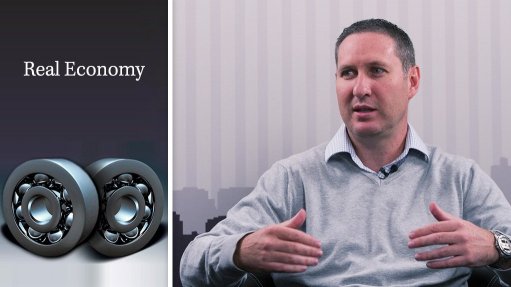
The new operating philosophy outlined by acting Eskom CEO Brian Molefe sounds very much like the much-maligned ‘keeping the lights on’ policy pursued in the immediate aftermath of the 2008 crisis. The strategy is based on finding the theoretical ‘sweet spot’ that will enable the utility to conduct much-needed maintenance with “no, or minimal, load-shedding”.
The main difference this time round is that Molefe has not promised an end to confidence- and growth-sapping rotational power cuts, the risk of which will remain for 18 to 24 months. However, he says Eskom will pursue a model that blends the ‘keeping-the-lights-on’ policy of the past with the more recently adopted ‘maintenance-first’ operating strategy.
Drawing on a ‘production possibility frontier curve’ to explain the theo- retical approach being adopted, Molefe says the generation business unit – which presides over plants that are ageing and undermaintained – will seek to find a point along that convex curve where both goals of maximising maintenance and keeping the lights on can be achieved.
“Keeping the lights on and doing maintenance appear to be contradictory, but I think it is possible to have them both as objectives. We have to find a point somewhere on the curve between keeping the lights on at all costs and not doing maintenance; or doing maintenance and switching off the lights – there is, I think, a sweet spot somewhere in the middle,” he explains.
Using the metaphor of a household budget, Molefe explains the model thus: “If you have expenditure of R1 200, how can you survive on a budget of R1 000? Firstly, it is to recognise that the budget is R1 000 and, secondly, it is to prioritise expenditure in such a way that, at the end of the month, you can stay within the budget,” he explained, likening load-shedding to going into overdraft.
For the current winter, Eskom expects daily demand to peak at around 35 500 MW (36 500 MW, once a 1 000 MW operating reserve is included) against a theoretical dispatchable installed base of 43 500 MW. It has, therefore, set a daily outage ‘budget’ of 7 000 MW – 5 500 MW of which is considered planned maintenance, leaving only 1 500 MW for breakdowns. Achieving such a ratio will require a major change in the performance of the coal-fired fleet, where unplanned maintenance has increased materially since 2010, resulting in the energy availability factor falling to below 75%.
In fact, it may not even be possible, unless all outages (planned and unplanned) are treated simply as maintenance, which is possibly why Eskom has stopped sending out its biweekly system status bulletins, which offered insight into how much capacity was unavailable owing to planned and unplanned maintenance.
The worrying element is whether the new philosophy will offer enough space to materially alter the balance in favour of proactive maintenance, or whether it will result in engineers having to run from one unplanned event to another.
That said, if the correct balance can be struck and a sweet spot can indeed be found, Molefe and his team will be heralded as having helped to remove the most serious immediate constraint to growth and investor confidence.
For now, though, it would be premature to make a call as to whether it is ‘back to the future’ for Eskom or the start of an operational turnaround. For the sake of South Africa, we can only hope the new approach delivers results that can be sustained over time, with as few unintended consequences as possible.